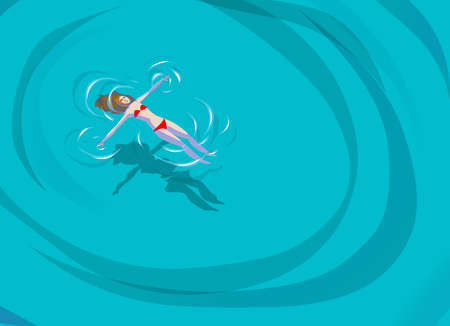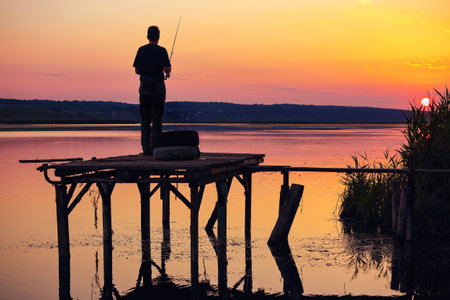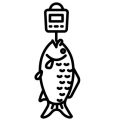Essential Gear for Cold Weather Fly Fishing
When winter arrives and the rivers start to chill, having the right gear is absolutely crucial for successful fly fishing. Staying warm and dry allows you to focus on your casts instead of shivering on the bank. First up: layering is your best friend. Start with a moisture-wicking base layer (avoid cotton), add an insulating mid-layer like fleece, and top it off with a waterproof, windproof shell jacket.
Waders Built for Winter
Cold water demands insulated, breathable waders—think stockingfoot models paired with thick wool socks and wading boots that provide solid grip on icy rocks. Don’t forget a quality wading belt to keep cold water out if you take a spill.
Gloves That Keep You Casting
Dexterity matters when tying knots or stripping line, so opt for fingerless neoprene or wool gloves. Some anglers prefer convertible mitts that let you switch between full-finger warmth and exposed fingertips for precision tasks.
Specialized Fly Fishing Equipment
Winter gear isn’t just about staying warm; you need performance too. Choose rods and reels designed to handle heavier lines, since colder temperatures can stiffen fly lines and reduce casting distance. Consider using a larger arbor reel to minimize line memory in freezing conditions.
Stay Warm, Stay Safe
Pack hand warmers, carry a thermos with hot coffee or soup, and keep an emergency blanket in your vest—just in case. When you’re prepared with the right gear, winter fly fishing becomes less about battling the elements and more about enjoying the peace and solitude only cold weather brings.
2. Choosing the Right Flies and Tackle
When it comes to winter fly fishing in the U.S., your gear choices can make or break your day on the water. Cold water changes fish behavior—they become sluggish, selective, and feed less aggressively. That means you need to match your setup to these unique conditions for any shot at success.
Match the Hatch: Go Subtle and Small
During winter, aquatic insect activity slows way down. The main menu for trout shifts to midges, small mayflies, and the occasional stonefly nymph. Focus on imitating what’s actually available in the stream. Use smaller fly patterns (often sizes 18–24) and natural colors to avoid spooking wary fish. Check out this quick reference:
| Hatch | Fly Pattern | Recommended Size |
|---|---|---|
| Midges | Zebra Midge, Griffith’s Gnat | 18–24 |
| Mayflies (Blue-winged Olive) | BWO Nymph, RS2 | 18–22 |
| Stoneflies | Copper John, Pat’s Rubber Legs | 14–18 |
Downsize Your Tackle for Stealth and Sensitivity
Winter waters are typically clearer and lower than in other seasons. Downsizing your tippet and leader is crucial—try 5X or 6X fluorocarbon for better stealth and a more natural drift. Lightweight rods (2wt–4wt) offer greater sensitivity for detecting subtle takes. If you’re Euro nymphing, consider using longer rods with delicate tips to maximize presentation and feel.
Tackle Setup Tips:
- Reels: Look for sealed drag systems to prevent freezing.
- Lines: Choose cold-weather fly lines that stay supple below freezing.
- Nets: Use rubber mesh nets to avoid freezing up with snow or ice.
- Accessories: Keep floatant warm inside your jacket; bring extra tippet spools.
Pro Tip:
If you notice fish aren’t responding, drop down another fly size or switch to a slimmer profile pattern. In winter, less is often more.

3. Tactics for Locating Winter Trout
Winter fly fishing is all about playing the odds and maximizing your chances. When temperatures drop, trout behavior shifts dramatically, so reading winter water and pinpointing their favorite holding spots becomes crucial.
Reading the Water in Winter
Cold weather changes everything. In the chill, trout conserve energy by seeking out slower-moving water. Look for deep pools, back eddies, and the inside bends of rivers where the current eases up. These spots allow trout to rest while still having access to food drifting by. Avoid fast riffles—trout rarely hang out there when it’s icy cold.
Identifying Prime Holding Spots
Productive winter lies are often found near structure—think submerged logs, boulders, or undercut banks. These features offer shelter from the current and predators. Pay attention to transitions between slow and slightly faster water; trout will often hold right at the seam, ready to dart out for a meal but not waste precious energy fighting the flow.
Understanding Winter Trout Patterns
Trout metabolism slows down in colder months, so don’t expect them to chase your fly across the stream. Instead, they’ll hunker down in groups, sometimes stacked up in surprisingly small areas. Early afternoon usually brings the warmest water temps and a short window of increased feeding activity—plan your outings around this time if possible.
The key to winter fly fishing success is patience and observation. Scan the water slowly, watch for subtle movement, and approach each spot stealthily. By understanding how trout respond to winter conditions and targeting their preferred habitats, you’ll increase your odds of hooking up even on the coldest days.
4. Adapting Casting and Presentation Techniques
Winter fly fishing demands a different set of casting and presentation skills compared to warmer months. Fish metabolism slows down in cold water, making them less aggressive and more selective about what they eat. To increase your odds of hooking up, you’ll need to master slow, subtle presentations, practice mindful casting, and know how to deal with icy rod guides.
Slow and Subtle Presentations
When water temperatures drop, trout tend to hold close to the bottom and conserve energy. Fast retrieves or flashy presentations rarely work. Instead, use these slow and subtle techniques:
| Technique | Description | When to Use |
|---|---|---|
| Dead Drift | Let your fly drift naturally with the current, mimicking food moving slowly along the riverbed. | In slow pools or near the bottom where fish are holding tight. |
| Short Strips | Retrieve your line with minimal movement—short, gentle pulls that barely move the fly. | When fish seem interested but aren’t committing to faster strips. |
| Swinging Flies | Allow your streamer or nymph to swing across the current slowly, keeping it just above the substrate. | Effective in seams and tailouts where trout wait for easy meals. |
Mindful Casting in Winter Conditions
Casting in winter is all about efficiency and stealth. The cold can limit your dexterity, so every cast counts. Focus on:
- Avoiding false casts: Minimize false casting to reduce line tangles and ice buildup on guides.
- Targeted casts: Place your fly precisely into likely holding spots instead of covering lots of water.
- Shorter distances: Winter trout often hug the banks or rest in slower pockets; don’t overcast past them.
- Smooth motion: Slow down your casting stroke to prevent shocking cold-stiffened rods and lines.
Dealing with Icy Guides
Iced-up guides are a common winter frustration. Frozen guides can damage your line or break leaders if ignored. Here are some practical tips for keeping your gear in working order:
- Dip in water: Occasionally dip your rod tip in the stream; moving water clears ice better than standing air.
- Lip balm or paste wax: Apply a thin layer to guides before fishing; this helps repel water and slows ice build-up.
- Casting rhythm: Regularly strip line through your fingers as you cast to knock off forming ice.
- Avoid breathing on guides: Warm breath adds moisture that freezes fast—use your fingers instead if needed.
Troubleshooting Guide Freeze-Ups
| Problem | Quick Fix |
|---|---|
| Icing every few casts | Dunk guides frequently; use wax/lip balm more liberally |
| Losing sensitivity/line sticks | Straighten leader/tippet often; check for micro-ice inside guides regularly |
| Brittle line due to freezing | Warm spare spools under jacket; switch lines if one gets too stiff/frozen |
The right approach to winter casting and presentation can turn tough conditions into productive days on the water. Stay patient, adapt your techniques, and keep your gear functional—you’ll find yourself connecting with more cold-weather trout than ever before.
5. Safety and Comfort in Harsh Conditions
Understanding the Risks of Winter Fly Fishing
Winter fly fishing isn’t just about skill and patience—it’s also about respecting the harsh elements you’re up against. Cold water, icy banks, and unpredictable weather can turn a great day into a dangerous one if you’re not prepared. Whether you’re wading into a tailwater or casting from the bank, understanding these risks is your first step toward a safe adventure.
Recognizing and Preventing Hypothermia
Hypothermia is a real threat during winter outings. Early signs include shivering, numbness, slurred speech, and confusion. If you notice any of these symptoms in yourself or your fishing buddy, it’s time to get warm immediately. Wear moisture-wicking base layers, insulated mid-layers, and always bring an extra set of dry clothes in a waterproof bag. Stay dry—wet clothing loses its insulating power fast.
Packing Essential Emergency Gear
A winter fly fisher’s pack should always include more than flies and tippet. Essentials include a compact first aid kit, chemical hand warmers, an emergency blanket, high-energy snacks, and a reliable headlamp. A small thermos of hot coffee or soup goes a long way for morale and warmth. Don’t forget your phone (fully charged) and let someone know where you’ll be—and when you expect to return.
Managing Risks on the Water
Ice along riverbanks or rocks can be treacherous—use studded boots or traction devices for better grip. Always test the stability of ice or snow before stepping out. Fish with a partner if possible; solo trips in winter require extra caution. Keep your wading belt snug to prevent icy water from filling your waders if you take a spill.
Final Thoughts on Winter Safety
The thrill of winter fly fishing comes with challenges that demand respect for the conditions. Prioritize safety every time you gear up—your comfort and survival depend on it. With the right preparation and mindset, cold-weather angling can be both rewarding and safe.
6. Winter Fishing Etiquette and Conservation
When you’re winter fly fishing, the quiet solitude of cold rivers is a special privilege—but it comes with responsibility. Respecting fellow anglers and preserving these fragile environments is just as important as landing a trophy trout.
Respecting Other Anglers
Even in winter, popular waters can get crowded on warm days. Give other anglers plenty of space—more than you might in summer, since fish are concentrated in fewer holding areas. If you’re approaching someone’s spot, always ask before moving in, and avoid casting over their water. Keep noise down, including crunching snow or slamming car doors; winter sound travels far. A friendly nod or “Good luck!” goes a long way out on the river.
Minimizing Environmental Impact
Winter ecosystems are vulnerable. Frozen banks and low flows mean vegetation and stream beds can be easily damaged. Stick to established trails and entry points to avoid trampling fragile riparian zones. Pack out every scrap of trash—used tippet, snack wrappers, even biodegradable items like fruit peels. Be especially mindful of wading: move slowly to avoid stirring up silt that can smother insect life and disrupt spawning beds.
Leave No Trace Basics
The “leave no trace” ethic isn’t just for hikers. In winter, it’s critical for anglers too. Don’t build fires along the bank or disturb rocks that could be protecting overwintering insects or eggs. Use barbless hooks to make catch-and-release easier on fish (and your fingers in the cold!).
Ethical Fish Handling in Cold Weather
Fish are stressed during winter—low metabolism means longer recovery after a fight. Land fish quickly using appropriate gear, wet your hands before handling, and keep them in the water as much as possible during unhooking or photos. Avoid laying fish on snow or ice; extreme cold can damage their skin and gills instantly. Revive fish gently by supporting them upright in slow current until they swim away strongly.
Sharing the Resource Responsibly
Finally, remember that winter fly fishing is about more than personal success—it’s about stewardship. By respecting others and minimizing your impact, you help ensure these fisheries stay healthy and productive for seasons to come. Tight lines—and tread lightly.


